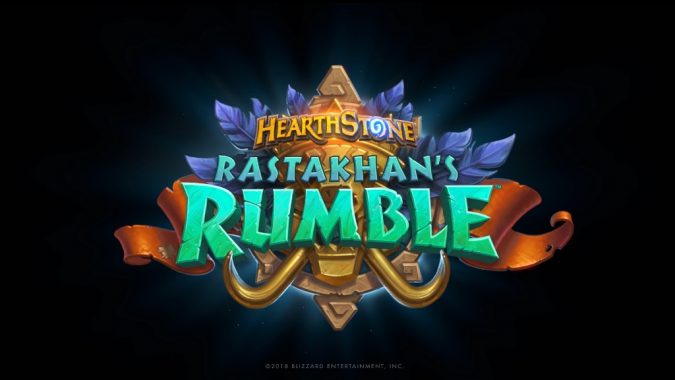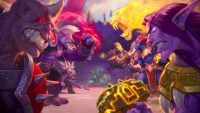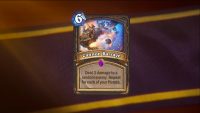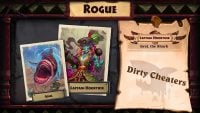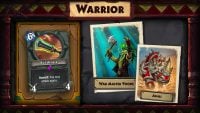Single Player content in Hearthstone’s Rastakhan’s Rumble
During the Puzzling Dungeons and Bewitching Hunts Panel at BlizzCon, players learned more about the history of single player gameplay in Hearthstone, as well as the first details of the Rumble Run, the single player experience in Rastakhan’s Rumble. Dave Kosak, Paul Nguyen, and Giovanni Scarpati showed the iterative path Hearthstone has taken from stand alone Adventures to the single player missions included in every new set. These panels are great as the developers peel back the curtain to show us their design process and some of their ideas that didn’t make the cut. I loved that in an early prototype of the Dungeon Run, you faced Jarraxxus. Every expansion, they’ve tried to work in a Tower Defense mode — one of these expansions, we’ll actually get it.
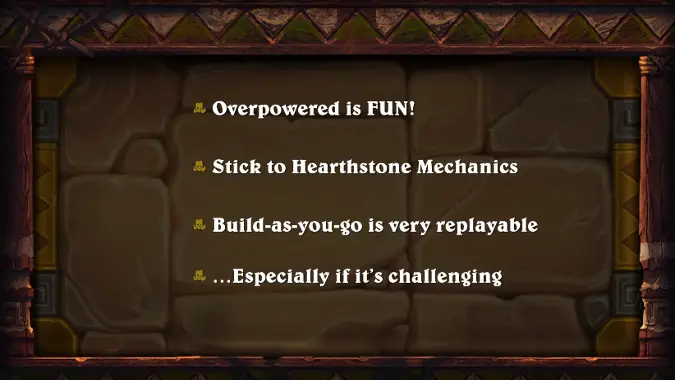
Learning from the past
Hearthstone has three main types of single player content: linear battles, build as you go, and puzzles. Linear battles include all the original stand alone adventures from the Curse of Naxxramas to the final adventure, One Night in Karazhan. The team stayed close to their comfort zone and chose linear battles for the first single player missions in Knights of the Frozen Throne. Build as you go is what players see in Kobolds and Catacombs’ Dungeon Runs and Witchwood’s Monster Hunts. Build as you go provided greater replayability over linear battles. Then with Boomsday Project, the team brought in puzzles. Puzzles had less replayability, but proved highly engaging. Players logged many hours solving them.
The team took big lessons from these projects. One of the most important was even without the reward of cards that Adventures provided, players still enjoyed the content and played it extensively. They also learned they need to stick to core Hearthstone mechanics, build as you go has the best replayability, and getting the challenge curve right is key. Too easy and it feels like a loot pinata — too hard and players give up. But if they find the sweet spot, the player experiences a sense of triumph when they win after many unsuccessful attempts.
They also learned perhaps the best lesson of all — overpowered is fun.
All these lessons had a major impact on the design of the single player content in Rastakhan’s Rumble.
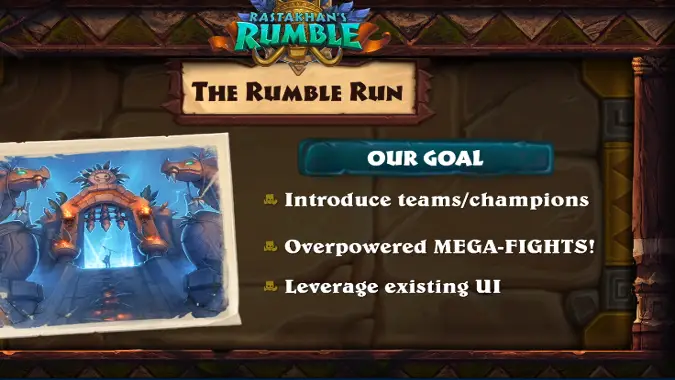
The Rumble Run
In the Rumble Run you play as Rakkar, an up and coming fighter in the Gurubashi arena. He’s got the brains. He’s got the brawn. He’s got the tusks (at least until he joins the Sharks). What he needs is a team. Nine teams fight for dominance in Rastakhan’s Rumble, and hey howdy hey, there are nine classes in Hearthstone. After you choose your team (i.e., class), the Hero portrait changes, with Rakkar donning the uniform of the team to reflect your choice. It has an Overwatch League feel.
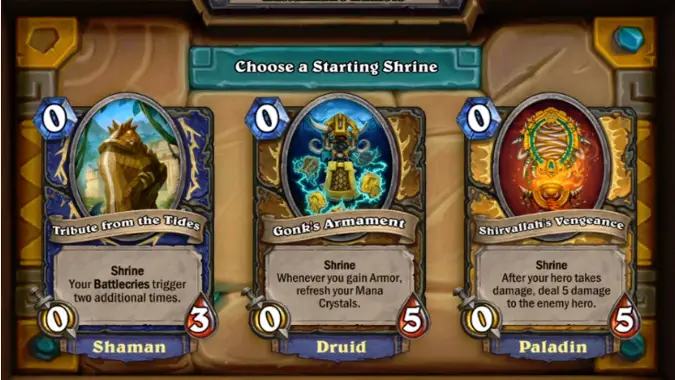
The Shrine
Next, you’ll choose one of three Shrines. Shrines are a core mechanic in the Rumble Run. They are minions on the board which provide powerful effects, similar to the passive treasures from Monster Hunts/Dungeon Runs.. Like the Cloak of Invisibility passive in the Dungeon Run, Shrines change the way you play. Even to the point of changing how you think about taking damage. The Paladin Shrine, for example, deals 5 damage to the enemy hero any time your hero takes damage. They showed a fight where the player won by shooting himself with a Elven Archer to do 1 damage, and then the Shrine did 5 damage for lethal to the opponent.
Shrines have zero attack and varying amounts of health. They can be killed — however this only causes them to go dormant. They are able to return, though the team didn’t go into specifics on how they return. Is it a set number of turns or does the player have to fulfill a condition (play a number of cards, kill a number of minions, etc.)?
This dormant and active cycle creates huge power swings because your opponent will have a Shrine, too. To become champion you must defeat each of the other eight teams. Their champions are the bosses you face. Each team has three bosses, one for each of their shrines, giving a total of 27 total bosses.
The role of treasures in the Rumble Run comes in the form of teammates. These minions have abilities which have synergy with the Shrine. One of the Paladin teammates, Gloryseeker, passes damage from himself to your hero. This may sound like a terrible teammate until you remember the Paladin Shrine. The damage passed from Gloryseeker to the hero activates the Shrine. The demo showed a Paladin hero with only 10 health taking down a 30 health Shaman, helped in part from damage Gloryseeker caused.
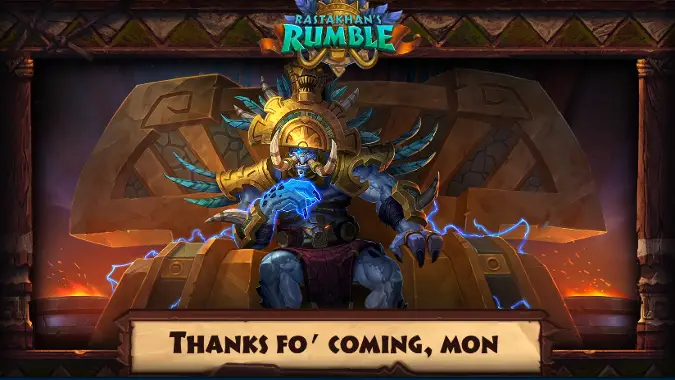
Coming soon
The Rumble Run will open 9 days after the launch of Rastakhan’s Rumble — December 13 for those of you scoring at home. While this mode looks like great fun on its own, it also seems like it could be a fun multiplayer experience. The developers agree. After launch, they plan on having several Tavern Brawls which will be a multiplayer version of the Rumble Run.
I’m looking forward to playing the Rumble Run. It sounds like a blast, and I’d anticipate a special card back for beating it will all nine classes/teams.
Please consider supporting our Patreon!
Join the Discussion
Blizzard Watch is a safe space for all readers. By leaving comments on this site you agree to follow our commenting and community guidelines.
 @honorshammer
@honorshammer